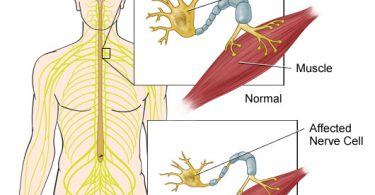Fistula means an abnormal connection or passage way between organs that do not normally connect.
Most commonly fistulas occur near the anus. This condition is termed as fistula-in-ano. A fistula occurs when a boil or an abscess develops in anal glands. If the opening of these glands get blocked then the infection gets confined to that area as it is unable to drain out into the rectum. It balloons up to form a pus boil or an abscess and it will keep growing inwards to form a tract. This tract is called fistula whose primary opening in inside the anal canal and secondary opening is in the perianal skin.
Every time the opening gets blocked an abscess will develop and the tract will increase in size. Sometimes in a chronic case we may see more than one opening and multiple tracts.
Frequency
The prevalence rate is 8.6 cases per 100,000 population. The prevalence in men is 12.3 cases per 100,000 population. In women, it is 5.6 cases per 100,000 population. The male-to-female ratio is 1.8:1. The mean age of patients is 38.3 years
Causes of Anal Fistula
There is usually a history of one of the following:
- Anorectal abscess (most common cause).
- Piles or hemorrhoids.
- Anal fissures.
- Surgery for piles or fissures usually give rise to fistula in future.
- Constipation.
- Crohn’s disease.
- Carcinoma.
- Anal fissures.
- Actinomycoses.
- Chlamydial infections.
- Radiation therapy.
Pathophysiology
The cryptoglandular hypothesis states that an infection begins in the anal gland and progresses into the muscular wall of the anal sphincters to cause an anorectal abscess. Following surgical or spontaneous drainage in the perianal skin, occasionally a granulation tissue–lined tract is left behind, causing recurrent symptoms. Multiple series have shown that the formation of a fistula tract following anorectal abscess occurs in 7-40% of cases.
Anatomy of fistula-in-ano
The Goodsall rule can help to anticipate the anatomy of fistula-in-ano. The rule states that fistulae with an external opening anterior to a plane passing transversely through the center of the anus will follow a straight radial course to the dentate line. Fistulae with their openings posterior to this line will follow a curved course to the posterior midline (see image below). Exceptions to this rule are external openings more than 3 cm from the anal verge. These almost always originate as a primary or secondary tract from the posterior midline, consistent with a previous horseshoe abscess.
Parks classification system
The Parks classification system defines 4 types of fistula-in-ano that result from cryptoglandular infections.
Parks classification of fistula-in-ano.
- Intersphincteric
- Common course – Via internal sphincter to the intersphincteric space and then to the perineum
- Seventy percent of all anal fistulae
- Other possible tracts – No perineal opening; high blind tract; high tract to lower rectum or pelvis
- Trans-sphincteric
- Common course – Low via internal and external sphincters into the ischiorectal fossa and then to the perineum
- Twenty-five percent of all anal fistulae
- Other possible tracts – High tract with perineal opening; high blind tract
- Common course – Via intersphincteric space superiorly to above puborectalis muscle into ischiorectal fossa and then to perineum
- Five percent of all anal fistulae
- Other possible tracts – High blind tract (ie, palpable through rectal wall above dentate line)
- Common course – From perianal skin through levator ani muscles to the rectal wall completely outside sphincter mechanism
- One percent of all anal fistulae
- Suprasphincteric
- Extrasphincteric
Presentation
History
Patients often provide a reliable history of previous pain, swelling, and spontaneous or planned surgical drainage of an anorectal abscess.
Signs and symptoms (in order of prevalence)
- Perianal discharge
- Pain
- Swelling
- Bleeding
- Diarrhea
- Skin excoriation
- External opening
Past medical history
Important points in the history that may suggest a complex fistula include the following:
- Inflammatory bowel disease
- Diverticulitis
- Previous radiation therapy for prostate or rectal cancer
- Tuberculosis
- Steroid therapy
- HIV infection
Review of symptoms
- Abdominal pain
- Weight loss
- Change in bowel habits
Miasm behind fistula in ano
Fistula in ano mainly belongs to the syphilitic miasm having following characteristics –
1.Perianal pyogenic inflammations (perianal abscess).
2.IBS (irritable bowel syndrome) where pus and mucus in the stool predominate.
3.Black stool which may contain scrapings of intestine or jelly like lumps of mucus.
4.Burning and bursting sensations in the rectum.
5.Putrid and foetid discharges, may also oozes pus and sanious fluid.
6.Aggravation at night, from warmth and amelioration by cold.
Investigations
– Fistulography
– Endoanal/endorectal ultrasound
– MRI
– CT scan
– A barium enema/small bowel series
– Anal manometry
– Examination under anesthesia
– Proctosigmoidoscopy/colonoscopy
Similimum in fistula in ano
TUBERCULINUM – To start the treatment and also as an intercurrent remedy.
BELLADONA – Redness of anus, initial stage of pus formation with throbbing pain.
HEPUR SULPH –When first is over and there is intense pain, abscess turn into pus.
BACILLINUM – In tubercular patients who are susceptible to cold.
SULPHUR – In blind fistula, yellowish greenish, painless discharges.
CAUSTICUM – Burning and soreness in the rectum, chronic large piles, better in humid air.
ALOE. – Hemorrhoidal congestions; the hemorrhoids bleed often and profusely; protrude like grapes, with much tenesmus.
AURUM MET. – Obstinate constipation, with hemorrhoids.
BERBERIS VUL. – The stools of Berberis are accompanied by violent burning in the anus, as if the surrounding parts were sore; frequent or constant desire for stool. These symptoms have suggested the use of Berberis in fistula of the anus.
CALCAREA PHOS. – Fistula ani alternating with chest symptoms; Fistula ani, in persons who have pains in joints with every spell of cold, stormy weather. Fistula in tuberculosis subjects.
HYSDRASTIS CAN. – Fistula ani with constipation, piles and ulceration.
LACHESIS – Lachesis has a number of times cured fistula in ano when associated with this feeling as if a hammer continually hammered the little fistulous pipe.
NITRIC ACID – This has been a most useful remedy in fistula fissures condylomata polypi carbuncles cancer of the rectum and hemorrhoids – when the symptoms agree. It has cured carbuncles so sensitive that the patient would cry out when they were touched.
SILICEA – Silicea may be given with good result in all forms of ulcers, both benign and malignant. Its distinctive features are ulcers from bone disease’s, as caries or necrosis, scrofulous ulcers which appear about joints, ulcers which appear in the back from vertebral caries, and ulcers which appear about the hip in hip-disease, particularly if connecting with fistulae.
A fistula usually takes almost one to two years to completely heal. Hence patients should have a lot of patience while on homeopathic treatment in order to achieve a complete and permanent cure.





